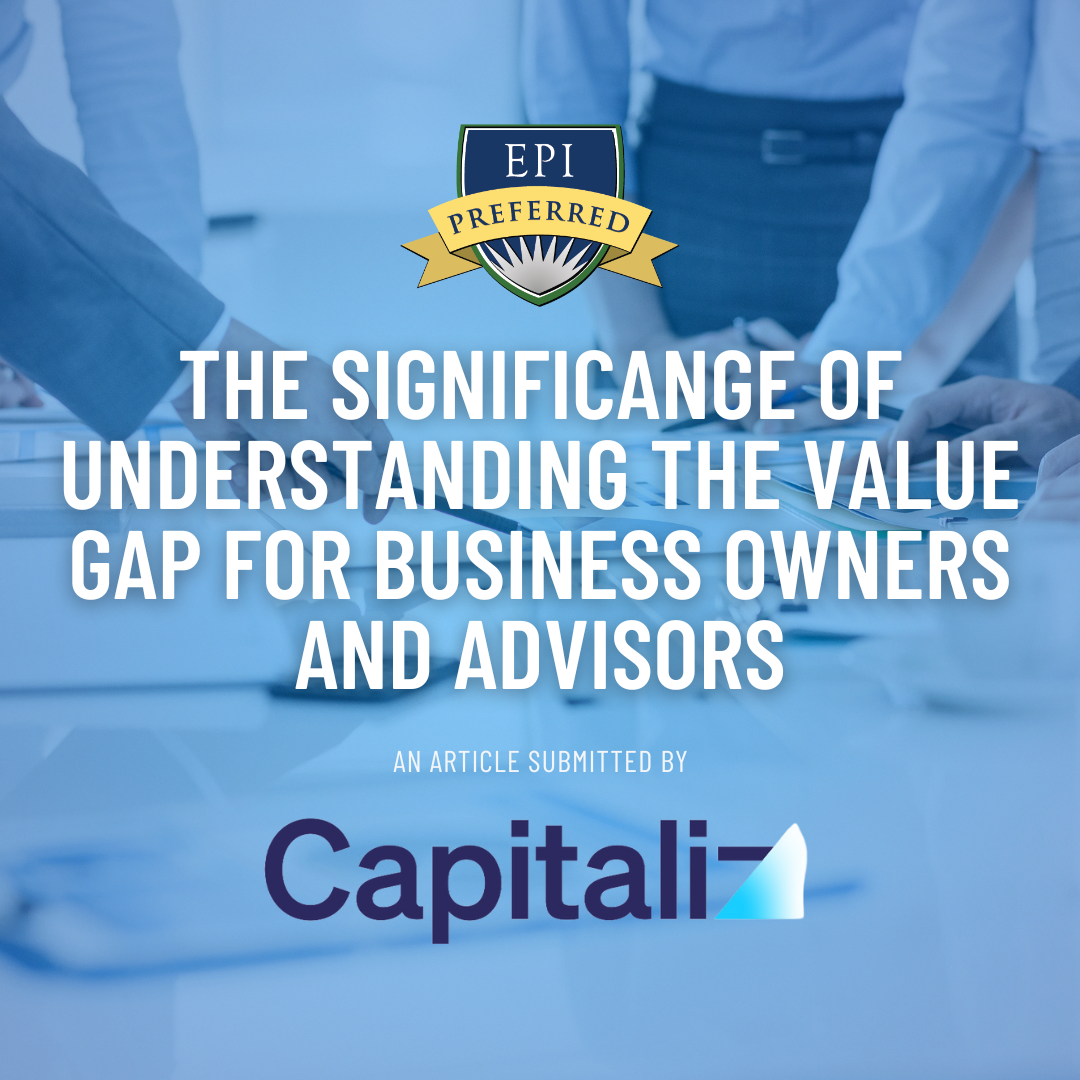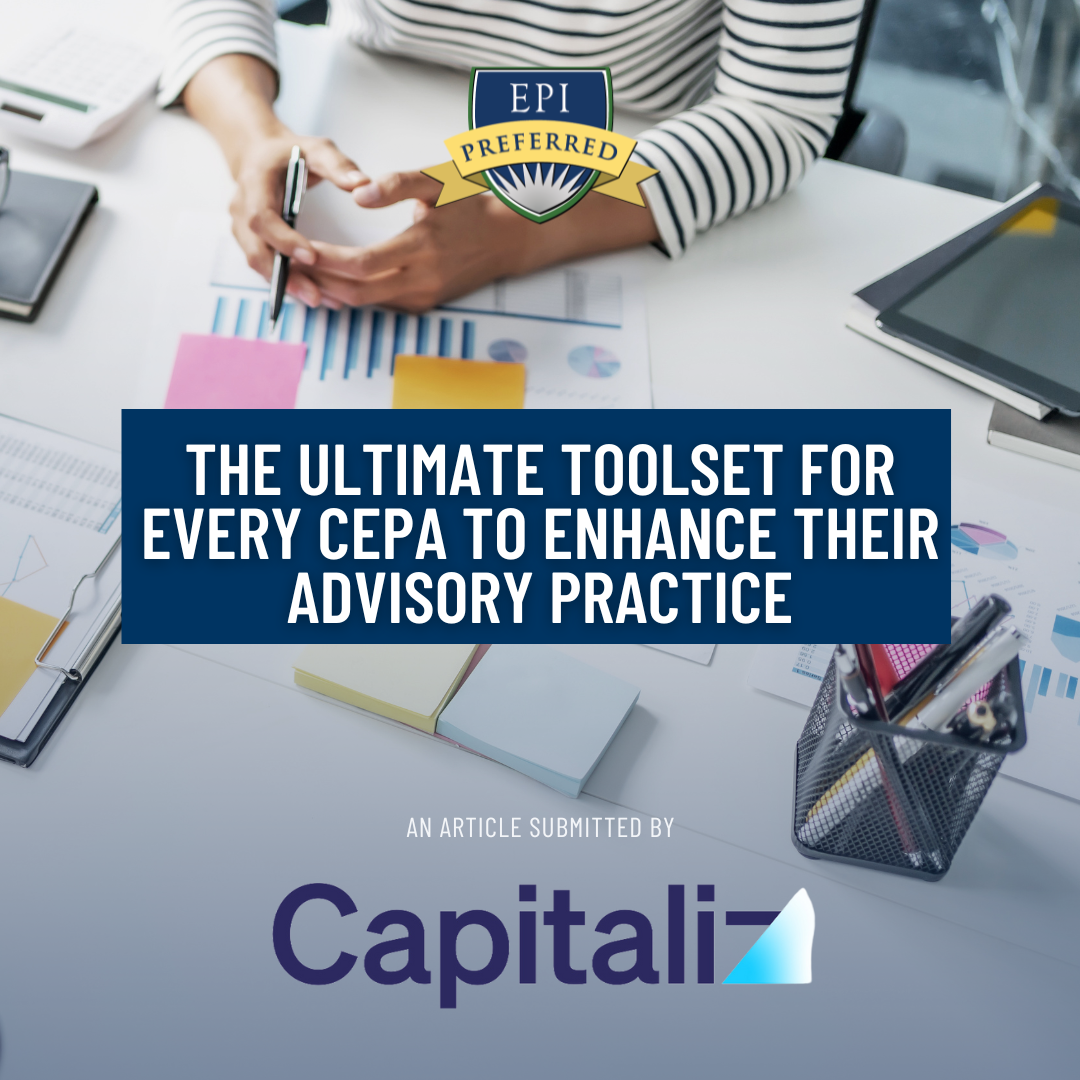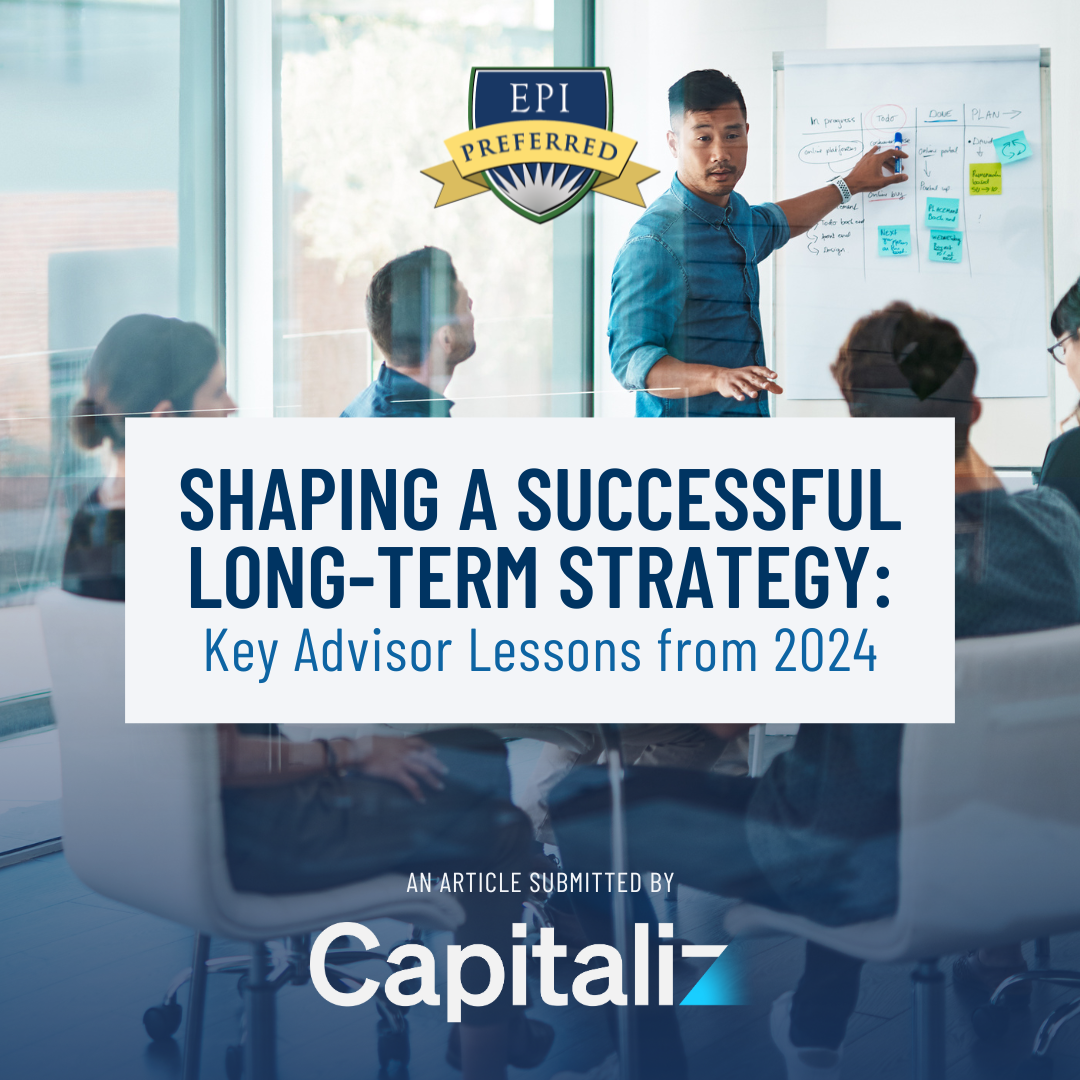
THE EXIT PLANNING BLOG
Keep up-to-date with exit planning, succession planning, industry trends, unique specialty insights, and useful content for professional advisors and business owners.
Share this
The Significance of Understanding the Value Gap for Business Owners and Advisors
by Partner Contributed Article on June 13, 2024

The Value Gap is a critical concept for advisors working with business owners, especially during the implementation plan phase. It represents the difference between the current value of a business and the owner’s required value at exit. Understanding and calculating the Value Gap is essential for several reasons:
1. Setting Realistic Goals
Advisors can help business owners set realistic and achievable goals for the growth of their business by understanding the Value Gap. It provides a clear target to work towards and helps in strategizing the necessary steps to increase the business’s value.
2. Strategic Planning
The Value Gap calculation informs the strategic planning process. It helps advisors identify the key areas where the business needs improvement and investment, such as operational efficiency, market expansion, or product development.
3. Exit Planning
For business owners looking to retire or exit their business, the Value Gap is a crucial metric. It helps in determining the right time to exit and ensures that the owner can retire comfortably or invest in new ventures.
4. Risk Management
Understanding the Value Gap allows advisors to identify potential risks that could affect the business’s value. This proactive approach to risk management can protect the business’s value and the owner’s financial future.
5. Performance Measurement
The Value Gap can be used as a performance measurement tool. By regularly calculating the Value Gap, advisors and business owners can track progress and make informed decisions to steer the business in the right direction.

Understanding and Calculating the Value Gap
Calculating the Value Gap involves assessing the current value of the business, which is done using the Capitaliz Business Insights Report, which uses a unique combination of financial, non-financial and benchmarking data to determine the current value and potential value. The required value is typically the amount the owner needs to fund their retirement or next venture. The difference between these two values is the Value Gap.
Advisors play a vital role in identifying the Value Gap and devising strategies to bridge it. This may involve improving business processes, exploring new markets, or enhancing the business’s overall strategic direction. By doing so, advisors ensure that business owners are well-prepared for their future, financially secure, and able to achieve their long-term goals.
The Value Gap is a fundamental concept that advisors must understand and communicate effectively with business owners. It is not just a number but a roadmap that guides the business towards increased value and successful owner exit. As such, it is an indispensable part of the implementation plan and a key to the success of both the advisor and the business owner.
Most owners do not know this number, and it can be the vital “trigger “that prompts the owner to take action in preparing their business succession and exit plan. Not many owners can ignore or walk away from their value gap – as it simply means leaving money on the table. Our new Value Gap Assessment Tool is ideal as a first conversation starter to discuss this gap with owners and agree to proceed with a more detailed analysis (the Business Insights Report) to drill down into the values (both current and potential) and find out how to close the gap.

Strategies and Tools for Advisors to Bridge the Value Gap
Advisors can play a pivotal role in helping business owners bridge the Value Gap by implementing a variety of strategies and tools. Here are some ways advisors can assist:
1. Comprehensive Financial Analysis
Advisors can generate detailed financial analyses, including benchmarking and profit gap analysis, to understand the current financial health of the business and identify areas for improvement.
2. Strategic Advisory
Utilizing frameworks like the 21-step framework, advisors can guide business owners through the process of increasing their business’s value, organized into thematic stages for a structured approach.
3. Employee Share Ownership Plans (ESOPs)
Advisors can introduce mechanisms like ESOPs to incentivize employees to think and act like business owners, aligning their interests with the company’s success.
4. Value Acceleration
By tracking the value gap and value acceleration over time, advisors can highlight the value of their advice and the progress made in increasing the business’s value.
5. Exit Planning
By tracking the value gap and value acceleration over time, advisors can highlight the value of their advice and the progress made in increasing the business’s value.
6. Marketing and Coaching
Advisors can provide marketing packs and group coaching sessions to help business owners understand the importance of the Value Gap and how to address it within their business strategy.
7. Utilizing Tools
Advisors can leverage tools like the Value Gap Assessment Tool to provide ongoing assessments and help business owners understand their potential value and the steps needed to realize that value.
8. Education and Training
Advisors can offer training and education to business owners, helping them understand the significance of the Value Gap and how it affects their exit strategy.
By employing these strategies, advisors can provide invaluable support to business owners in bridging the Value Gap, ensuring they are well-prepared for a successful business transition.
Leverage your Certification with Capitaliz!
Capitaliz is the comprehensive planning platform designed to help advisors conduct the triggering event engagement, grow and manage value, and systemize the methodology.
For more information, click here!
Meet The Author

Craig West, founder of Capitaliz, brings over 25 years of expertise in strategic accounting and business advisory. As a CPA, he specializes in Capital Gains Tax (CGT) for business sales, preparing businesses for successful exits. He is a strategic mentor for mid-market business owners and author of four acclaimed books on employee incentives, succession planning, asset protection, and exit strategies. He also leads Succession Plus, Australia's largest business succession and exit planning firm, with offices in Australia, the UK, New Zealand, and the USA. Craig was inducted into the International Exit Planning Circle of Excellence in 2024.
For more information, he can be reached at Capitaliz.com or on LinkedIn.
Share this
- Blog (545)
- CEPA (422)
- exit planning (249)
- CEPA community (187)
- Business Owner (172)
- Exit Planning Summit (96)
- EPI Chapter Network (89)
- Value Acceleration Methodology (80)
- Exit Planning Partner Network (76)
- EPI Announcement (49)
- Content (48)
- Webinars (37)
- Excellence in Exit Planning Awards (33)
- Marketing (30)
- 2024 Exit Planning Summit (28)
- 5 Stages of Value Maturity (26)
- Books (24)
- EPI Academy (24)
- EPI Team (22)
- Exit Planning Teams (22)
- Leadership (21)
- 2023 Exit Planning Summit (20)
- family business (20)
- women in business (19)
- Intangible Capital (18)
- Exit Options (17)
- Black Friday (16)
- CPA (15)
- Walking to Destiny (15)
- State of Owner Readiness (14)
- Chapters (13)
- Chris Snider (12)
- National Accounts (12)
- Small business (12)
- charitable intent (12)
- personal planning (12)
- Financial Advisors (11)
- Season of Deals (9)
- 5 Ds (8)
- About us (8)
- Podcast (8)
- Insiders Bash (7)
- Scott Snider (7)
- Christmas (6)
- Exit Planning Content Library (6)
- Case Studies (5)
- Owner Roundtables (5)
- Three Legs of the Stool (5)
- Value Advisors (5)
- financial planning (5)
- Awards (4)
- Circle of Excellence (4)
- Exit & Succession (4)
- Five Ds (4)
- executive training (4)
- EPI Thought Leadership Council (3)
- Owners Forum (3)
- author (3)
- forbes (3)
- DriveValue (2)
- Exit Is Now Podcast (2)
- Peter Christman (2)
- Veteran (2)
- Whitepapers (2)
- Business Owners Forum (1)
- SOOR (1)
- business consultants (1)






